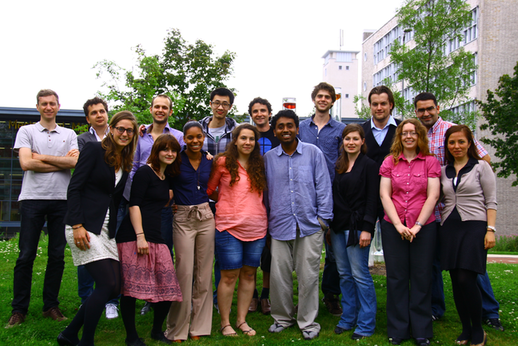Team:TU-Delft
From 2012.igem.org
(Difference between revisions)
| Line 117: | Line 117: | ||
<br/> | <br/> | ||
<center> | <center> | ||
| - | <div id="groupphoto" style="position:relative; top:0; left:0; width: | + | <div id="groupphoto" style="position:relative; top:0; left:0; width:550px; height:250px; border:0; margin:0 0 20px 0; padding:0; overflow:hidden;"> |
<a href="https://static.igem.org/mediawiki/igem.org/7/7b/Groupphoto2.PNG" rel="lightbox" title="iGem TUDelft Leiden team 2012" target="_blank"> | <a href="https://static.igem.org/mediawiki/igem.org/7/7b/Groupphoto2.PNG" rel="lightbox" title="iGem TUDelft Leiden team 2012" target="_blank"> | ||
| - | <img src="https://static.igem.org/mediawiki/igem.org/7/7b/Groupphoto2.PNG" name="kugroup" width=" | + | <img src="https://static.igem.org/mediawiki/igem.org/7/7b/Groupphoto2.PNG" name="kugroup" width="550" height="250" border="0" id="kugroup" /></a></div><br/> |
</center> | </center> | ||
| Line 137: | Line 137: | ||
<li><a href="https://2012.igem.org/Team:TU-Delft/Collaboration">We have provided the iGEM Paris 2012 team two Biobricks. Together with the Amsterdam team we were able to organize a crash course on the area of synthetic biology and we were honored to attend the LIFE-symposium with the Cambrigde 2010-team.</a></li> | <li><a href="https://2012.igem.org/Team:TU-Delft/Collaboration">We have provided the iGEM Paris 2012 team two Biobricks. Together with the Amsterdam team we were able to organize a crash course on the area of synthetic biology and we were honored to attend the LIFE-symposium with the Cambrigde 2010-team.</a></li> | ||
</ul> | </ul> | ||
| - | |||
| - | <center><iframe src="http://www.thenewview.eu/igem/wiki/photos/photoslide.html" style="width: | + | <center><iframe src="http://www.thenewview.eu/igem/wiki/photos/photoslide.html" style="width:570px; height:330px; border:0;"></iframe></center> |
<hr/> | <hr/> | ||
| - | < | + | <h5home> Do not forget to get our app at your phone!! Stay informed about all the updates in our wiki through your android !! To download it press <a href="https://play.google.com/store/apps/details?id=com.vansteinengroentjes.apps.igem" target="_blank">here</a> </h5home><br/> |
<hr/> | <hr/> | ||
Revision as of 15:38, 26 October 2012


Snifferomyces is a modular system, used in the detection of volatile compounds. It has in the membrane a G-protein–coupled receptor that can bind to a specific signal, once bound it then switches on a signaling machinery which transmits this information over the plasma membrane and through the cell to produce a Quantitative response in the form of fluorescence. Using the Snifferomyces, our aim is to develop a universal olfactory system which allows scientists to introduce olfactory receptors in yeast with minimal effort.
G-protein–coupled receptors (GPCRs) are one of the most important classes of proteins in living organisms that allows transmission of a wide variety of signals over the cell membrane, between cells and over long distances in the human body, thus acting as both the gatekeepers and molecular messengers of the cell. The importance of these receptors is emphasized by the Nobel prize awarded in 2004 for the discoveries of "odorant receptors and the organization of the olfactory system" and in 2012 for "studies of G-protein–coupled receptors".

|

|

|

|


- Localization of receptor NR1 using FLAG
- Activation of receptor NR1 by the ligand niacin
- Activation of the reporter by the native ligand alpha pheromone
- Providing a platform to swap receptors, promoters and terminators more easy
- Device design for yeast olfactory detector
- Deterministic and stochastic simulations and property analyses of pathway model
- Data fitting for deterministic pathway model
- Prediction of a ligand-binding niche within the human niacin receptor 1 with Molecular Dynamics simulations
- To find stake holders and create awareness among our project, we presented our project to a very large audience by participating in several events like Llowlab on Lowlands and the Floriade.
- Our main goal is to innovate a diagnostic tool for tuberculosis, one of the major health issues in the world
- We have provided the iGEM Paris 2012 team two Biobricks. Together with the Amsterdam team we were able to organize a crash course on the area of synthetic biology and we were honored to attend the LIFE-symposium with the Cambrigde 2010-team.
 "
"














